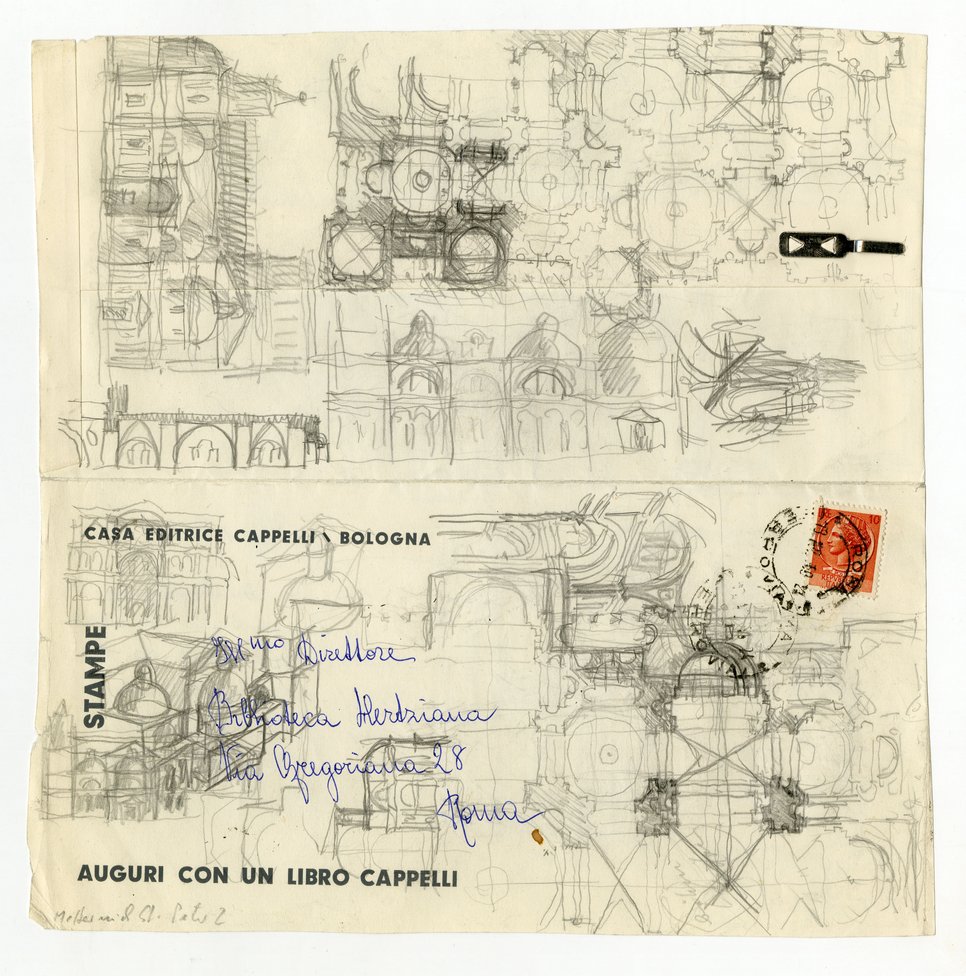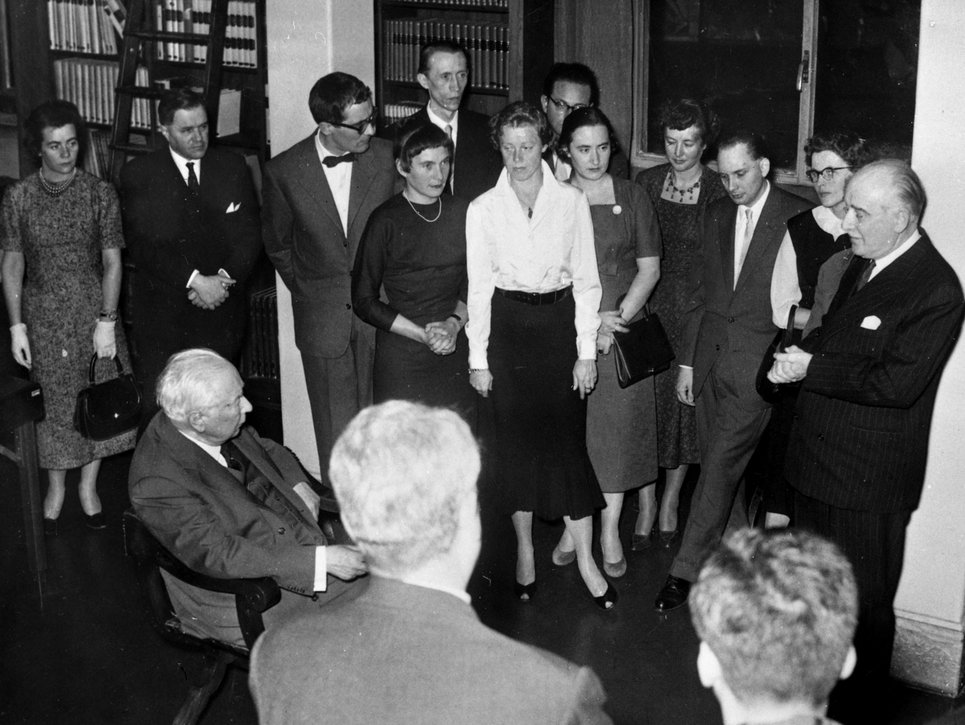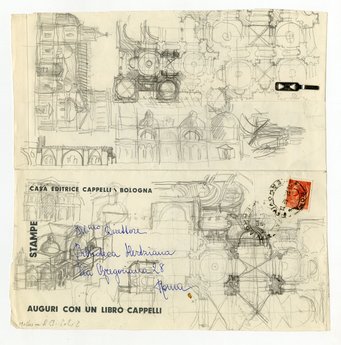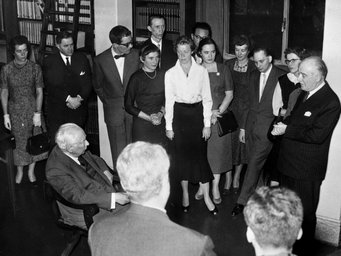Reinauguration and Consolidation (1953–1963)

Sketches from Franz Graf Wolff Metternich's notebook.
On its return to the Federal Republic of Germany, the Bibliotheca Hertziana became an institute of the Max Planck Society, the successor to the Kaiser-Wilhelm-Gesellschaft. It reassumed its original name and the Department of "Cultural Studies" was dissolved. The official reinauguration of the research institute, now known as the "Bibliotheca Hertziana (Max Planck Institute)", took place on 21 October 1953. The new director, Franz Count Wolff Metternich (1893–1973), a respected and experienced diplomat and the former head of the science unit in the cultural department of the Federal Foreign Office, had been actively involved in the restitution of the Hertziana and was instrumental in the relatively rapid reintegration of the institute into Rome’s scientific community. In 1956, Ludwig Schudt, the head of the library, and Heinrich Mathias Schwarz, research fellow in the newly established sub-department for Southern Italian art, were admitted to the circle of academic members of the Max Planck Society. The establishment of the Photographic Collection as a separate department with a stock of almost 50,000 photographs led to the further expansion of the institute.

The first generation of art historians concentrated their research on the Roman sacral and secular architecture of the 15th to 18th centuries. The results of the source-based research into architectural history, which was the focus of research in those years, met with international acclaim. Research into the Paleochristian medieval monumental art of Rome was also conducted in various studies. The newly established "Southern Italy Department" was dedicated to the study of the Southern Italian architecture of the Middle Ages. It was dissolved in 1977.

